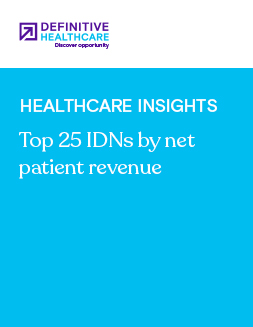Healthcare Insights
Top 20 infectious disease diagnoses
Infectious diseases are illnesses caused by pathogens (such as bacteria, viruses, fungi, or parasites) that enter the body and multiply, leading to a variety of symptoms.
These diseases can spread, directly or indirectly, from one person to another, through various means such as contact with contaminated surfaces, animal bites, or airborne droplets.
Physicians manage infectious diseases through a systematic approach that includes diagnosis, treatment, prevention, and patient education. This process ensures that the patient’s infection is effectively controlled, complications are minimized, and further spread of the disease is prevented.
Using data from the Atlas All-Payor Claims dataset, we’ve compiled a list of the most frequent patient visits for infectious and parasitic diseases in 2023.
| Rank | ICD-10 code | ICD-10 description | % principal diagnoses | Explore dataset |
|---|---|---|---|---|
| 1 | A419 | Sepsis, unspecified organism | 20.50% | Explore |
| 2 | B351 | Tinea unguium | 13.70% | Explore |
| 3 | B349 | Viral infection, unspecified | 11.50% | Explore |
| 4 | B20 | Human immunodeficiency virus [HIV] disease | 3.80% | Explore |
| 5 | A084 | Viral intestinal infection, unspecified | 2.90% | Explore |
| 6 | B078 | Other viral warts | 2.00% | Explore |
| 7 | B029 | Zoster without complications | 1.80% | Explore |
| 8 | B3731 | Acute candidiasis of vulva and vagina | 1.70% | Explore |
| 9 | B079 | Viral wart, unspecified | 1.70% | Explore |
| 10 | B070 | Plantar wart | 1.70% | Explore |
| 11 | B084 | Enteroviral vesicular stomatitis with exanthem | 1.70% | Explore |
| 12 | B353 | Tinea pedis | 1.50% | Explore |
| 13 | A0472 | Enterocolitis due to Clostridium difficile, not specified as recurrent | 1.10% | Explore |
| 14 | B181 | Chronic viral hepatitis B without delta-agent | 1.10% | Explore |
| 15 | B354 | Tinea corporis | 1.10% | Explore |
| 16 | B182 | Chronic viral hepatitis C | 1.00% | Explore |
| 17 | B372 | Candidiasis of skin and nail | 1.00% | Explore |
| 18 | B370 | Candidal stomatitis | 1.00% | Explore |
| 19 | A09 | Infectious gastroenteritis and colitis, unspecified | 1.00% | Explore |
| 20 | B081 | Molluscum contagiosum | 0.90% | Explore |
Fig. 1 Data is from the Atlas All-Payor Claims dataset for calendar year 2023. Claims data is sourced from multiple medical claims clearinghouses in the United States and is updated monthly. Data accessed October 2024.
What are the most common infectious and parasitic diseases?
Sepsis, ICD-10 code A419, accounted for the most patient visits for infectious and parasitic diseases at 20.50% of visits in 2023.
Sepsis is also one of the most common healthcare-associated infections (HAIs). Incidence of HAIs are tracked by the Centers for Medicare and Medicaid Services (CMS), and hospitals are required to report infection data to the CDC to receive Medicare reimbursements.
ICD-10 code B351 comes in second place. Tinea Unguium, also known as onychomycosis, is a fungal infection of the nails that leads to thickened, discolored, and sometimes brittle nails. It accounted for 13.70% of patient visits.
In third place is ICD-10 code B349, which refers to an unspecified viral infection. This code is used when a viral infection is diagnosed, but the specific virus causing the infection is not identified or classified. It serves as a generic category for various viral infections when the exact cause remains undetermined or more specific codes (for identified viruses) are not applicable. B349 accounts for 11.50% of patient visits for infectious diseases in 2023.
What are the four types of infections?
The four main types of infections are classified based on the pathogens that cause them. These include bacterial, viral, fungal, and parasitic infections. Each type is caused by different microorganisms and affects the body in distinct ways.
How are diseases spread from person to person?
According to Mayo Clinic, there are several ways to contract an infectious disease:
- Direct contact: An easy way to catch most infectious diseases is by coming into contact with a person or an animal with the infection.
- Indirect contact: Many germs can linger on an inanimate object, such as a tabletop, doorknob, or faucet handle. When you touch a doorknob handled by someone ill with the flu or a cold, for example, you can pick up the germs left behind.
- Insect bites: Some germs rely on insect carriers — such as mosquitoes, fleas, lice, or ticks — to move from host to host.
- Food contamination: Disease-causing germs can also infect you through contaminated food and water. This mechanism of transmission allows germs to be spread to many people through a single source.
Learn more
Healthcare Insights are developed with healthcare commercial intelligence from the Definitive Healthcare platform. Want even more insights? Start a free trial now and get access to the latest healthcare commercial intelligence on hospitals, physicians, and other healthcare providers.


